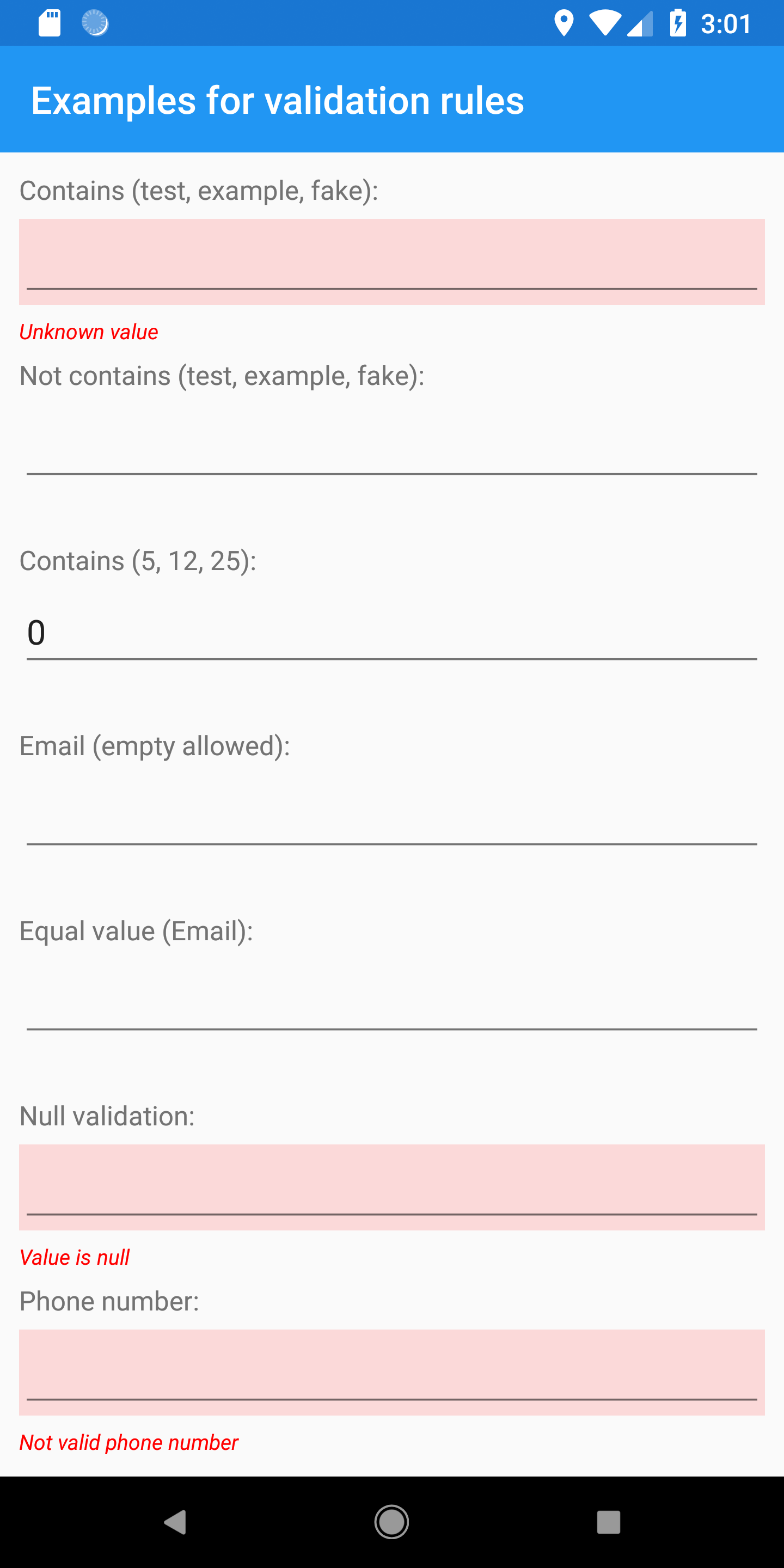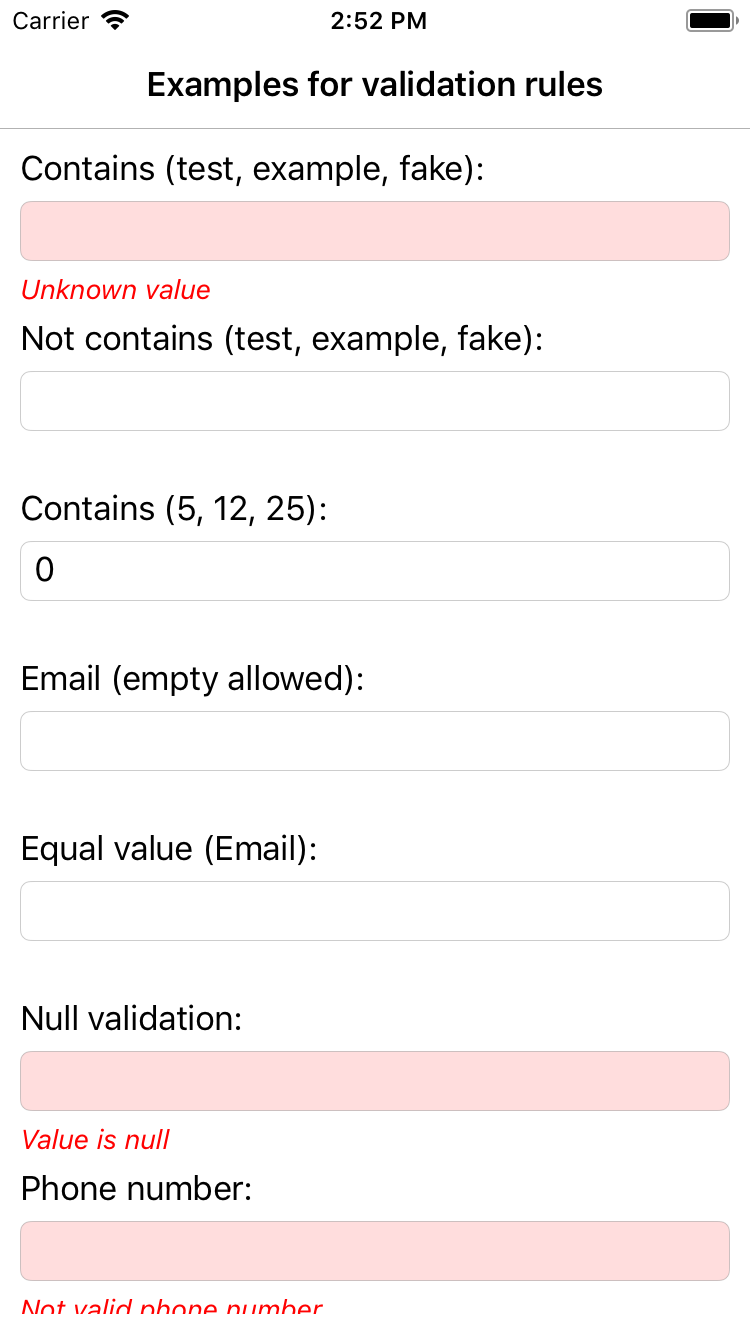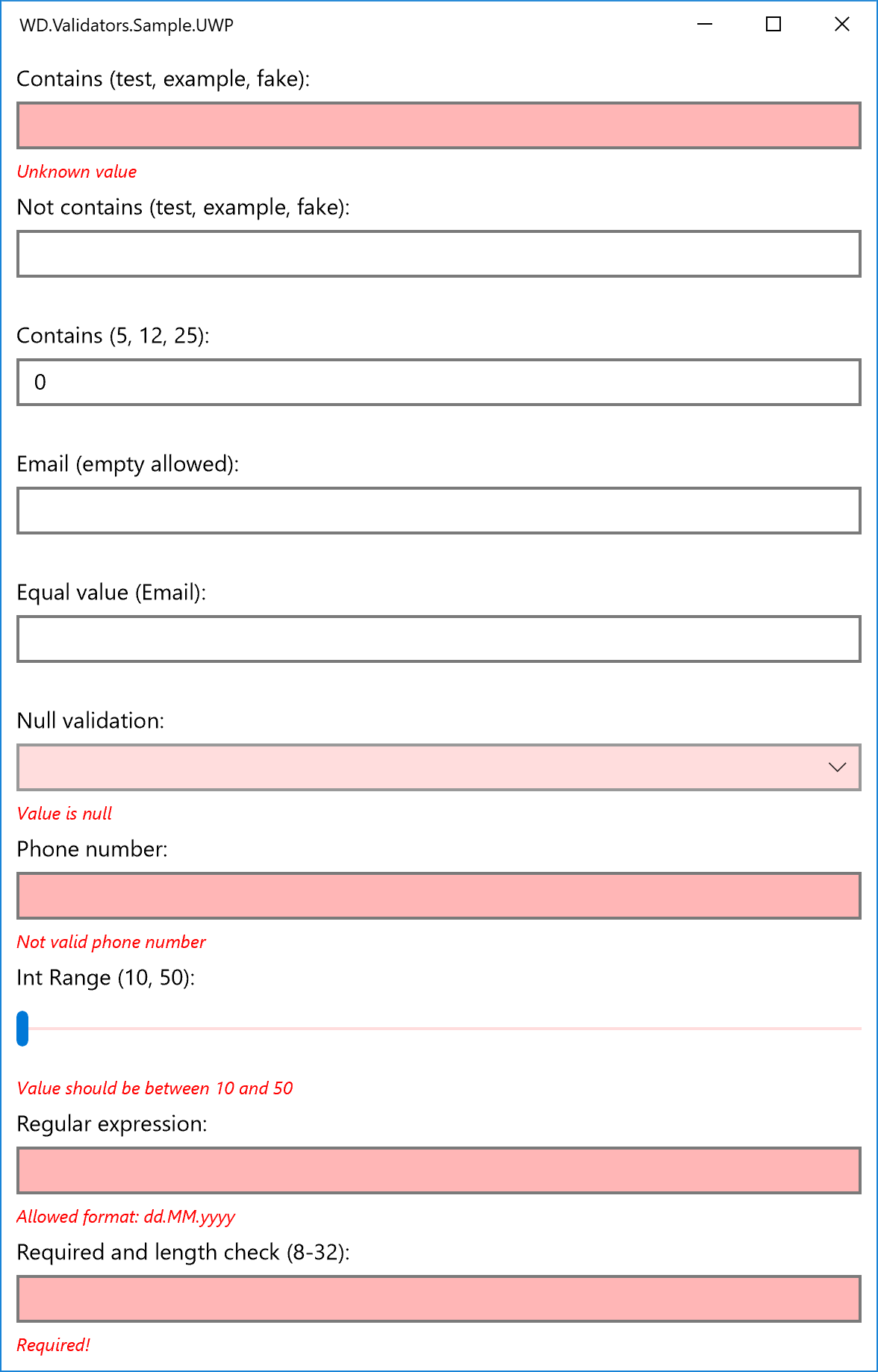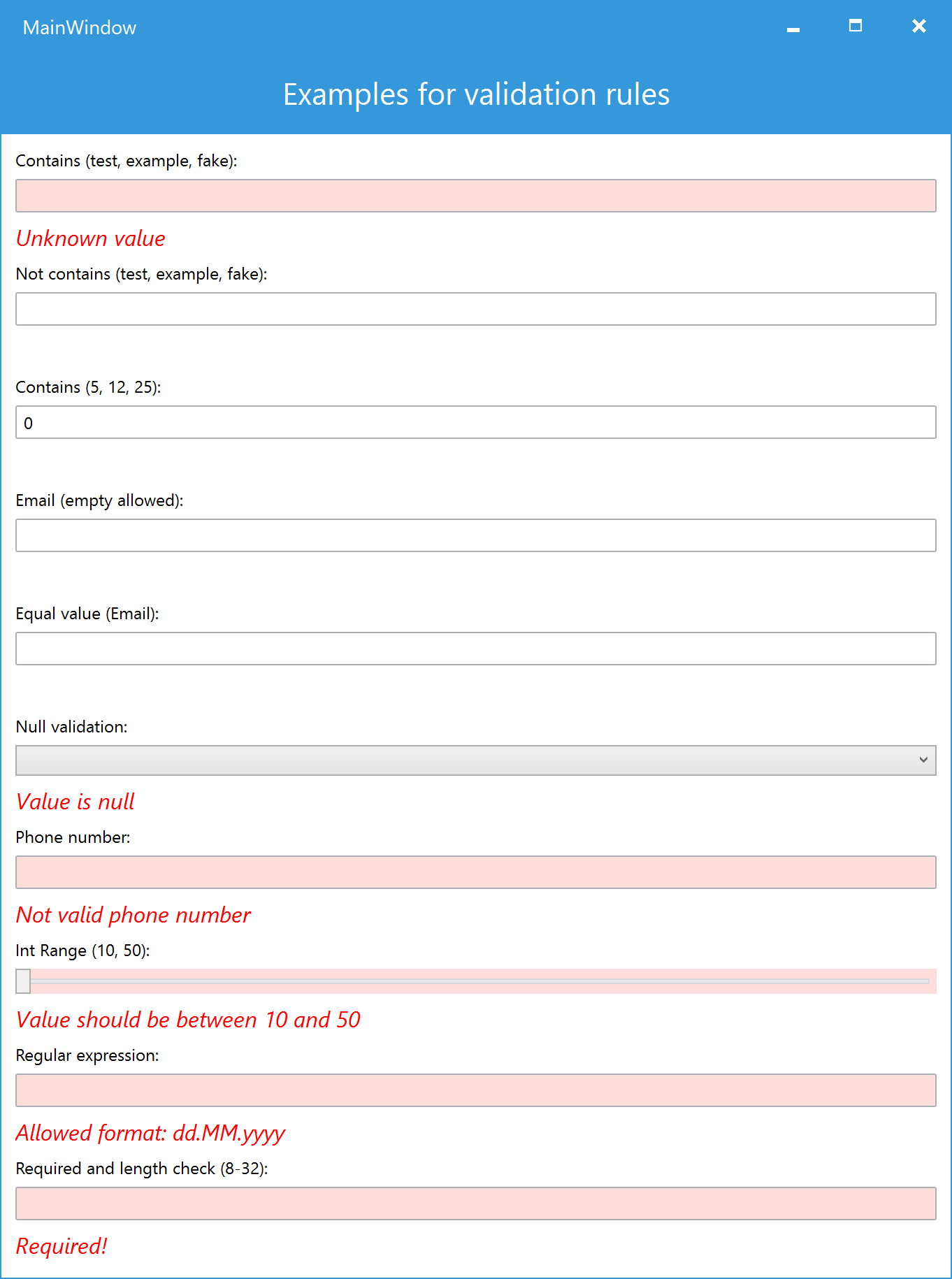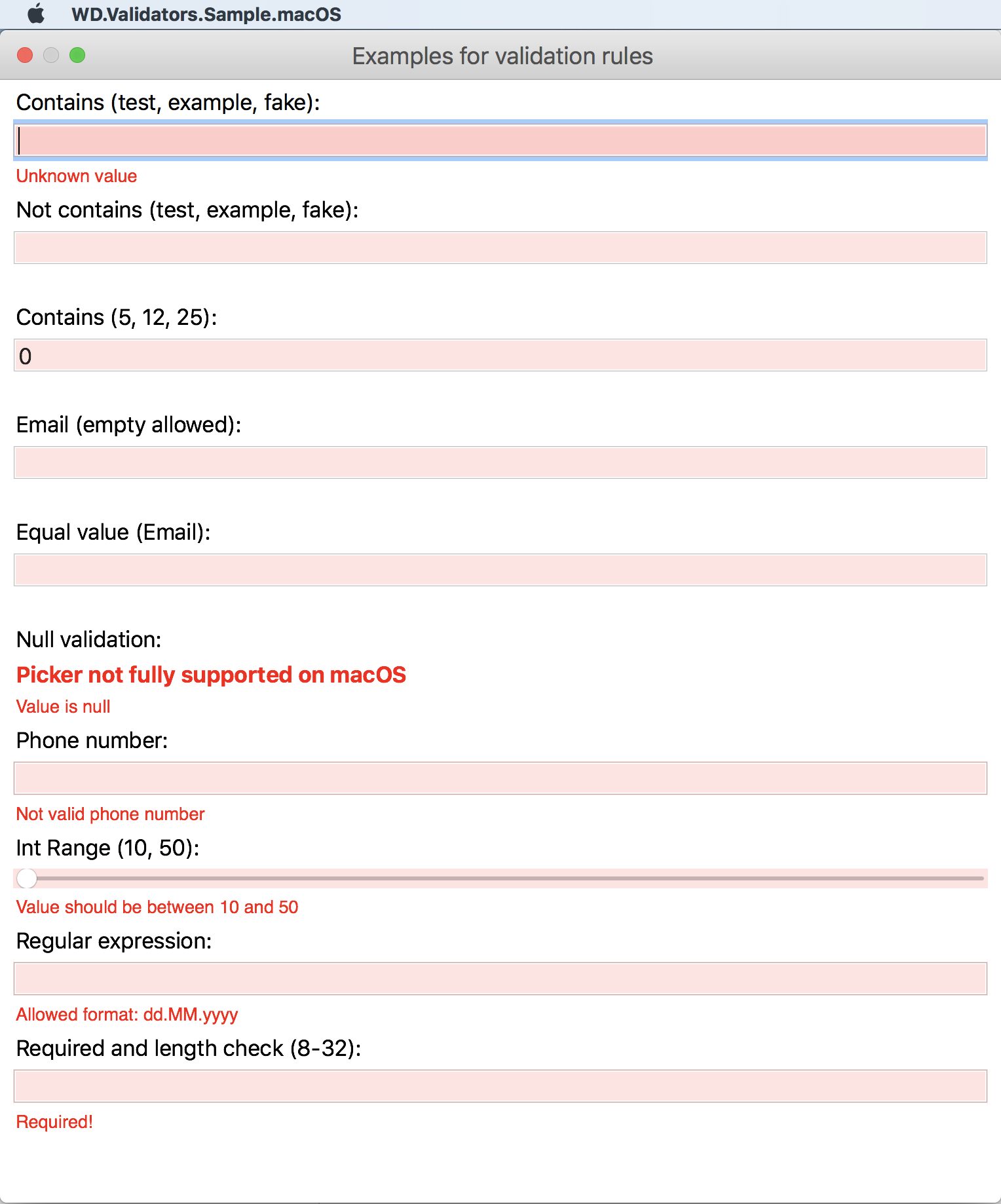Library with common value validators to be used in UI application (e.g. ASP.Net Core, Xamarin, UWP, WPF). The library is based on the ideas from the following book:
| Service | Last | Develop | Master |
|---|---|---|---|
| AppVeyor last | |||
| SonarCube coverage | |||
| SonarCube technical debt | |||
| SonarCube Quality Gate | |||
| Nuget |  |
 |
 |
IValidationRule<T>: Generic interface for the rulesIValidatable: Interface to handle validationIValidatableValue<T>: Generic interface for a validatable valueIValidatableValue: Non geniric interface for validatable value (mostly implemented explizit)
ContainsValidationRule- Check, if the value is in the given collection (with possibility to inverse the result)EmailValidationrule- Check, if the value is a valid email addressEqualValuesValidationRule<T>- Compare two values for equalityNullValidationRule- Check, if the value isnullPhoneNumberValidationRule- Check, if the value is valid phone number (with allowed separators-,(),.)RangeValidationRule<T>/PrimitiveRangeValidationRule- Compare the value to a given min and max valuesRegexValidationRule- Check, if the value match the given regular expressionRequiredValidationRule- Check, if the string value is set (with a flag, for white spaces treaded as valid values)StringLengthValidationRule- Check the max or min length of a stringGreaterThanValidationRule- Check, if the value is greater (or equal) to a given valueSmallerThanValidationRule- Check, if the value is smaller (or equal) to a given valueRevalidateOtherValueValidationRule- Trigger the validation of another validatable value
Initialize your validatable values in your view model.
MyValidatableValue = new ValidatableValue<string>
{
ValidationRules = new IValidationRule<string>[]
{
new ContainsValidationRule<string>(
errorMessage: "Value not allowed",
checkCollection: new[] {"test", "example", "fake"},
nullOrEmptyIsValid: true),
new StringLengthValidationRule(
errorMessage: "The value should have at least 2 characters
length: 2,
checkMaxLength: false),
new StringLengthValidationRule(
errorMessage: "The value should have at maximum 16 charachters",
length: 16),
new RequiredValidationRule(errorMessage: "Value is required")
}
};Bind the value in your XAML code.
...
<Label Text="My value:" />
<Entry Text="{Binding MyValidatableValue.Value}"
BackgroundColor="{Binding MyValidatableValue.IsValid, Converter={StaticResource ValidationColorConverter}}"/>
<Label Text="{Binding MyValidatableValue.FirstError}"
Style="{StaticResource ErrorMessage}" />
...